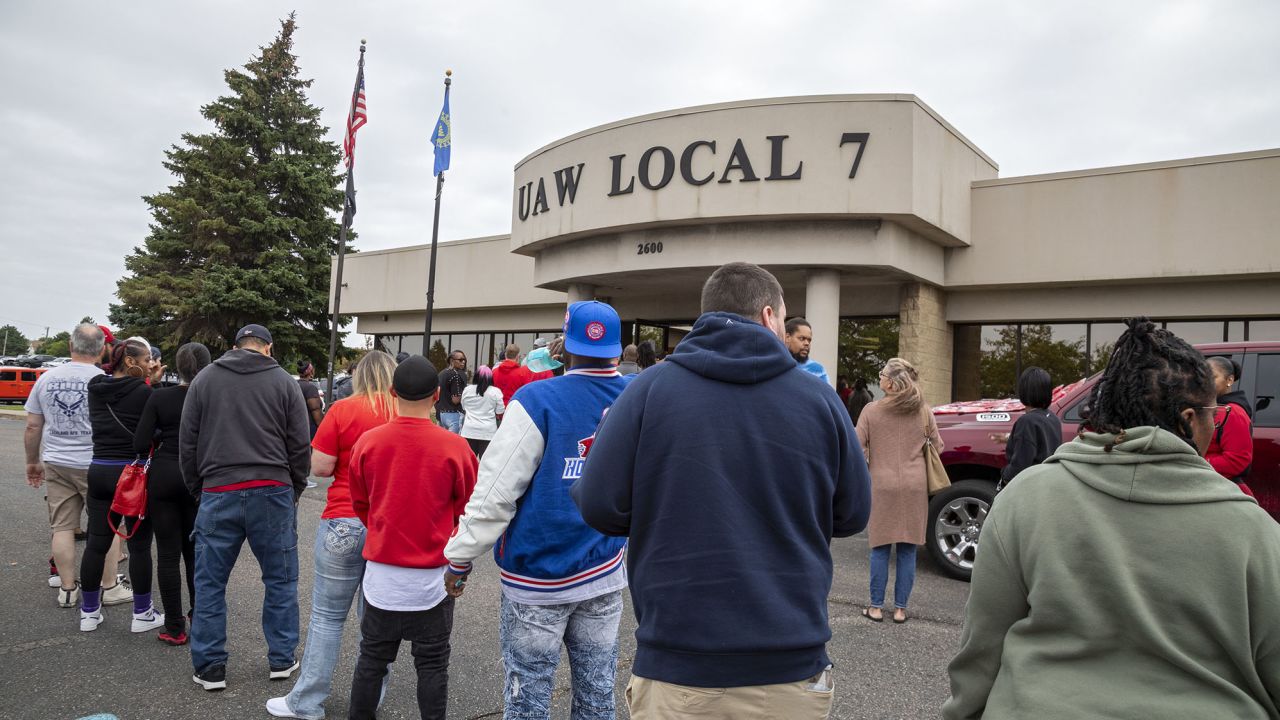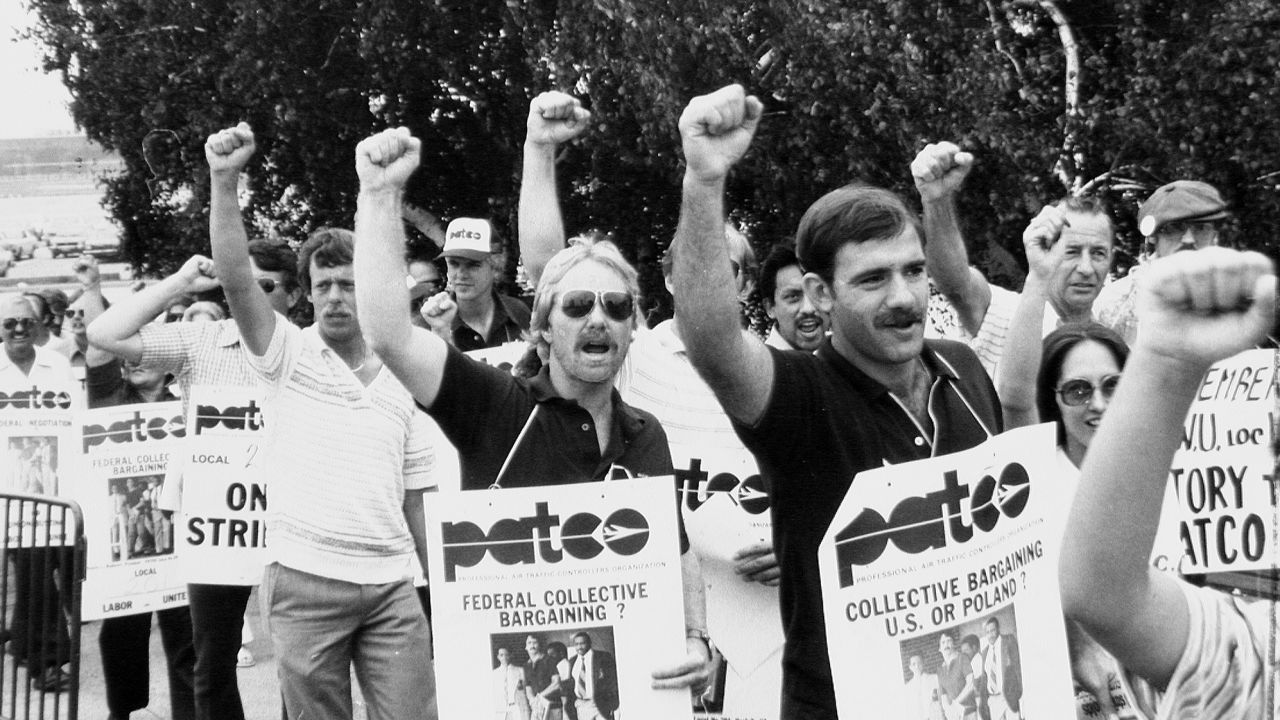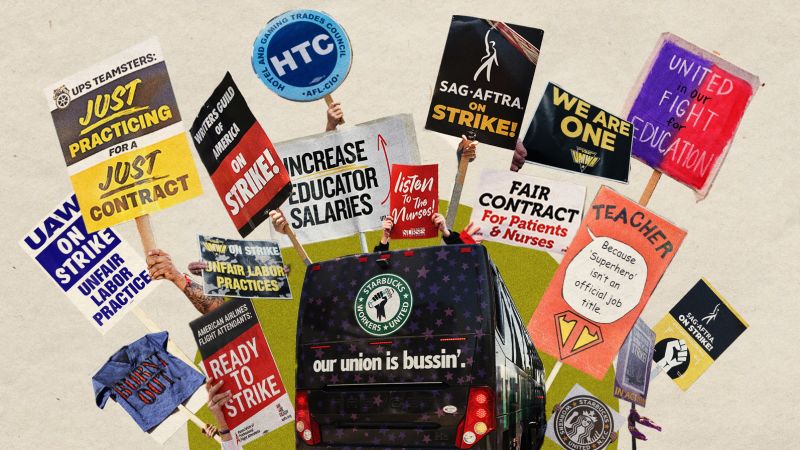The United Auto Workers strike isn’t happening in a vacuum. It’s part of a growing movement of US workers walking off the job.
From Hollywood writers to nurses, factory workers, and Starbucks baristas, thousands of workers have gone on strike in recent months to demand higher pay and improved benefits and working conditions. The Teamsters union recently used the threat of a strike by 340,000 members at UPS to secure most of their demands, including pay raises and new air conditioned vans.
Labor has become more aggressive because of decades of stagnant wages for lower and middle-income workers, while the richest Americans expanded their wealth to unprecedented levels. Corporate profits have soared since the pandemic, and workers want a greater piece of the profits.
“There’s a generational change taking place in the labor movement and its thinking,” said Joseph McCartin, a labor historian at Georgetown University.
Between 1979 and 2022, the inflation-adjusted annual wages of the top 1% of workers rose by 145%, while the average annual wages of the bottom 90% rose by only 16% — about a tenth as fast, according to the Economic Policy Institute. Several factors contributed to these trends, including deregulation, the decline of unions, and little change in the federal minimum wage.
The auto workers, for example, are taking aim at CEO compensation at Ford, General Motors and Stellantis — which has grown by more than 40% over the last four years — to press their case for worker wage increases.

Workers also believe they have more bargaining power due to a tight labor market and the strongest public support for unions in decades.
“We’re living through a strong labor market and economy, and workers and unions feel more leverage when economic forces are blowing in the direction they have been,” McCartin said.
Workers gained power during the pandemic as Covid-19 cast a spotlight on essential workers’ sacrifices and the vast disparities among America’s workforce.
Unemployment is at a near-decades low and employers are posting more job openings than there are unemployed job seekers. That gives workers some leverage to demand more of what they want.

Approval of labor unions is also at its highest point since 1965, according to Gallup. The majority of the public sees unions as key to improving pay and working conditions. Unionized workers earn on average 10.2% more in wages than non-unionized peers.
“Today’s striking workers may have a stronger hand in their negotiations than they would have had in the past given today’s elevated public support for unions,” Gallup said in a news release.
But despite the growing number of strikes, America still sees 70% fewer strikes now compared to the early 1970s, according to the Economic Policy Institute.
Union membership has also declined dramatically as some states placed barriers against unions through so-called “right to work” laws. Those laws allow workers to opt out of paying fees to a union at their workplace, even if they benefit from union bargaining agreements. Union membership has also declined as some companies have presented fierce opposition to unions. And unions have never organized workers at some companies such as car maker Tesla and steel maker Nucor that fend off unions by paying workers higher wages.
In a watershed moment in the decline of unions, 13,000 members of the federal air traffic controllers union walked off the job in 1981 and were fired by President Ronald Reagan and replaced. The labor confrontation had a chilling effect on unions. Meanwhile, Reagan enjoyed support from some unions, such as the International Brotherhood of Teamsters, both in 1980 and 1984 elections.

The union membership rate peaked in 1945 at 33.4% of the workforce, EPI said. In 1985, 18% of the workforce was unionized.
Last year, 10.1% of US workers were unionized.
“Coming out of the Reagan era, union leaders were in retreat and looking to get along with management,” McCartin said. Companies learned how to use strikes to weaken unions and they became less common.
But the labor movement has become more assertive.
During the past year through September 13, unions launched 396 strikes across the United States, similar to the 409 recorded the year prior, according to a Cornell University Institute of Labor Relations database.

The number of workers involved in major work stoppages hit the highest levels in decades in the years before the Covid-19 pandemic, particularly in 2018 and 2019. After subsiding during the pandemic, the number of workers who went on strike grew by 50% in 2022, according to a report by the Economic Policy Institute.
The election of UAW President Shawn Fain, a more combative leader than his predecessors who frequently blasts the “billionaire class,” reflected this shift.
Fain and UAW leadership are taking a different approach to negotiations with the three major US automakers. The UAW in previous contracts dating back to 2007 to 2009 gave significant concessions to automakers. At the time, years of losses and a global financial crisis had left the companies on their way to bankruptcy and federal bailouts.
In past negotiations, the union has sometimes chosen only one automaker to strike, while staying on the job at the other two. Once a deal was reached, the union moved to get the other automakers to accept that “pattern” as the basis for their own contract.
But Fain and UAW have announced a targeted strike plan at key plants at all three automakers.
“It’s a significant innovation,” McCartin said. “It’s part of how labor leadership has gotten smarter and more militant.”
Read the full article here










